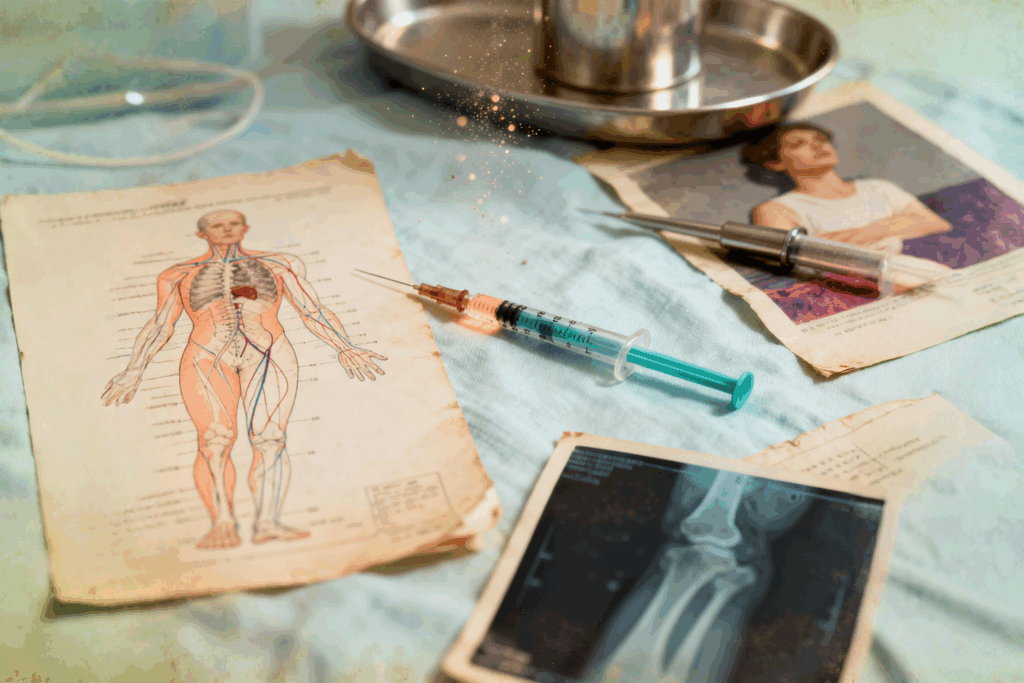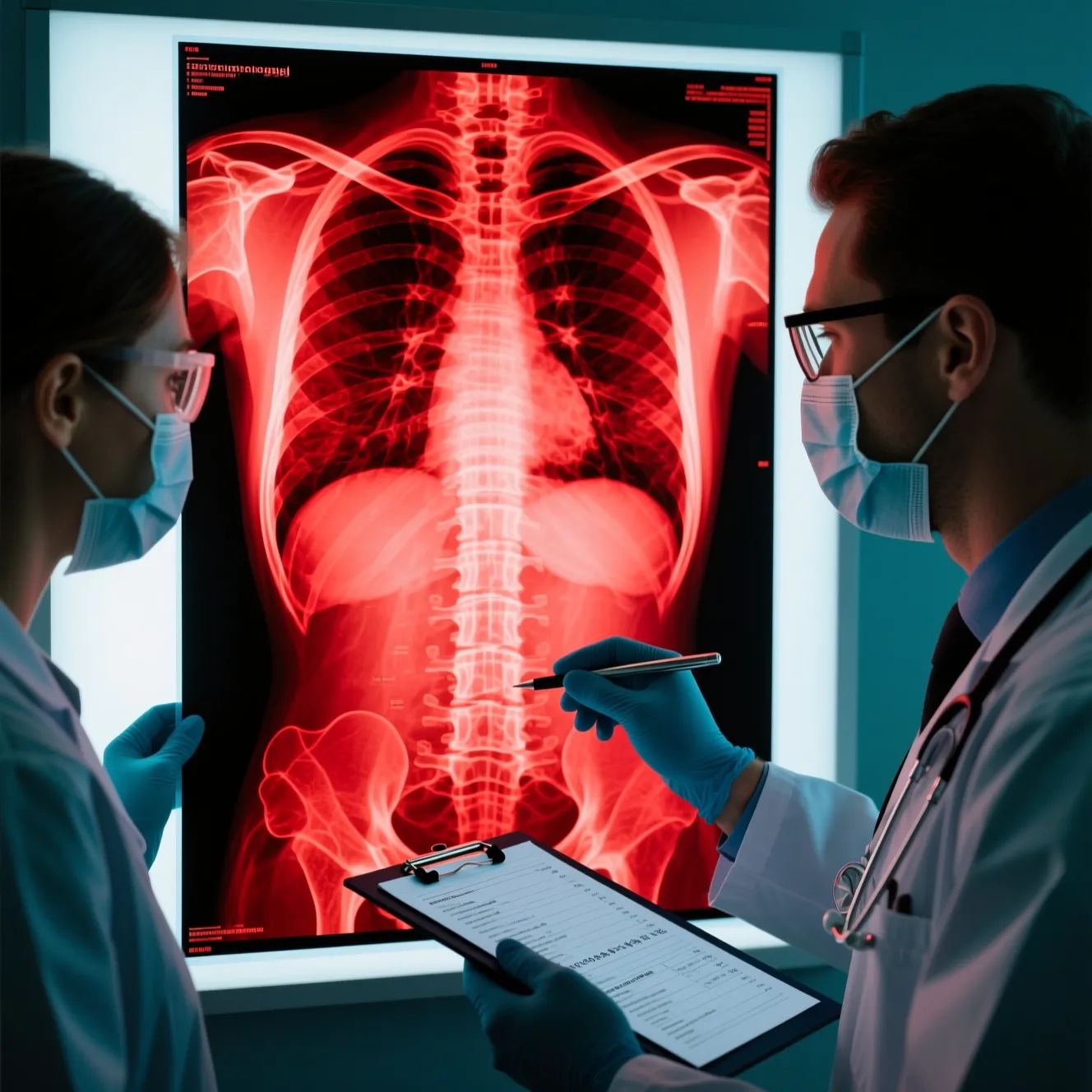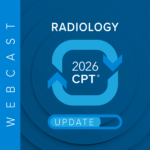With reimbursement pressures mounting, coding accuracy has never been more critical as the system remains strained and faces a storm of uncertainty heading into 2026. Abdominal IR procedures such as thoracentesis, perinephric drain placement, and tunneled peritoneal catheter insertion carry significant compliance risks if coded incorrectly. Below, we present real-world sample cases, identified by our subject matter experts, with code assignments and rationale. Case studies remain a proven approach, offering valuable insights into coding scenarios that strengthen both accuracy and comprehensive understanding.
SAMPLE CASES: DRAINAGE
CASE 1: ULTRASOUND-GUIDED RIGHT THORACENTESIS, ULTRASOUND AND FLUOROSCOPIC-GUIDED RIGHT PERINEPHRIC DRAIN PLACEMENT
History: 65-year-old male with bilateral nephrectomy most recently of the right kidney complicated by perinephric and perihepatic hematoma presenting with altered mental status and low-grade fever with CT KUB demonstrating persistent perinephric fluid collection with a small amount of gas and a small right-sided pleural effusion.
Procedure: Informed consent was obtained. The patient was prepped and draped in the usual sterile fashion. The pleural effusion was localized using ultrasound guidance. A permanent ultrasound image was stored for documentation. Using 1% lidocaine anesthesia, a 19 G Yueh centesis needle/catheter was advanced into the pleural fluid under ultrasound guidance. A total of 440 cc of dark fluid was removed. The catheter was removed. Fluid was sent for the appropriate laboratory studies. Next, the patient was positioned prone on the fluoroscopy table. Ultrasound demonstrated a complex fluid collection in the right perinephric space with a small foci of gas. After the skin was anesthetized using 1% lidocaine, a 19-gauge Yueh centesis needle/catheter was advanced into the fluid collection. A 035 guidewire was then placed through the Yueh catheter into the collection, and the tract was serially dilated. A 10 French pigtail catheter was then exchanged over the guidewire under fluoroscopy guidance. 10 cc of dark blood was aspirated. The drain was sutured to the skin and placed to gravity drainage. The tube insertion site was covered with sterile dressing.
Complications: None apparent.
Conscious Sedation: 41 minutes of moderate conscious sedation was administered. Continuous cardiopulmonary monitoring was performed. Cardiorespiratory function remained stable throughout the procedure. Refer to sedation note for additional details.
Medications: 1.5 mg of Versed and 75 mcg of Fentanyl IV, 18 ml of 1% lidocaine SQ
Findings: Small right pleural effusion. Complex right perinephric fluid collection with small foci of gas that aspirated dark blood suggestive of an old hematoma.
Impressions:
- Ultrasound-guided right diagnostic and therapeutic thoracentesis as described above.
- Ultrasound- and fluoroscopic-guided placement of right perinephric drain.
CODE ASSIGNMENTS AND RATIONALE
32555 Thoracentesis, needle or catheter, aspiration of the pleural space; with imaging guidance
49405 Image-guided fluid collection drainage by catheter (e.g., abscess, hematoma, seroma, lymphocele, cyst); visceral (e.g., kidney, liver, spleen, lung/mediastinum), percutaneous
Two separate procedures were performed and documented. In the first, a catheter was used for pleural drainage under ultrasound guidance. Since the catheter was removed, code 32555 is assigned. In the second procedure, an indwelling catheter was placed for drainage. Although this is documented as a collection in the perinephric space and not the kidney itself, a parenthetical note in the CPT manual under code 50020 indicates that 49405 is the appropriate code for percutaneous drainage of perirenal area. Both 32555 and 49405 include guidance, so do not code a separate S & I code. Although conscious (moderate) sedation was performed and documented, code 49405 includes sedation, so codes 99144 and 99145 cannot be assigned.
CASE 2: MANAGEMENT OF ASCITES
History: Recurrent ascites. Patient now hospice and cannot get recurrent para. Need aspira for symptom relief.
Performing Physician: Dr P
Reference Air Kerma: 40mGy
Consent: The risks, benefits and alternatives of the procedure were discussed with the patient. The patient’s questions were answered. Consent was obtained.
Procedure Description: Using sterile technique, local lidocaine and utilizing concurrent real-time ultrasound visualization, access to the abdominal ascites was obtained using a Yueh needle. A 0.035 wire was advanced. This entry site was dilated sequentially. A peel-away sheath was placed. A separate skin incision was made in the abdominal wall. The PleurX catheter was tunneled subcutaneously and passed intra-abdominally through the peel-away sheath. The catheter was secured in place using 2-0 suture at its exit site from the dermatotomy. The 1st dermatotomy, overlying the initial abdominal puncture, was closed using skin glue. The patient tolerated the procedure well.
Impression: Successful aspira catheter placement for abdominal ascites.
CODE ASSIGNMENTS AND RATIONALE
49418 Insertion of tunneled intraperitoneal catheter (e.g., dialysis, intraperitoneal chemotherapy instillation, management of ascites), complete procedure, including imaging guidance, catheter placement, contrast injection when performed, and radiological supervision and interpretation, percutaneous
Code selection is based on location not the catheter name. As the report supports an abdominal catheter for ascites treatment, 49418 is the appropriate choice.
⚠️ Your 2025 IR Coding Remains Under Threat, Creating Significant Risk to Your Bottom Line. These Are NOT All the Tips and Tricks Necessary for Success.
With every dollar of reimbursement counting more than ever in the face of payment decline and complex changes, it’s imperative to make sure your CPT® coding is correct and compliant. Master more coding topics and break down the complexity with our 2025 Abdominal Interventional Radiology Coding Webcast live on September 10, 2025 at 11:00 am CT (120 minutes). This webcast is an essential training tool for both audio and visual learners.













